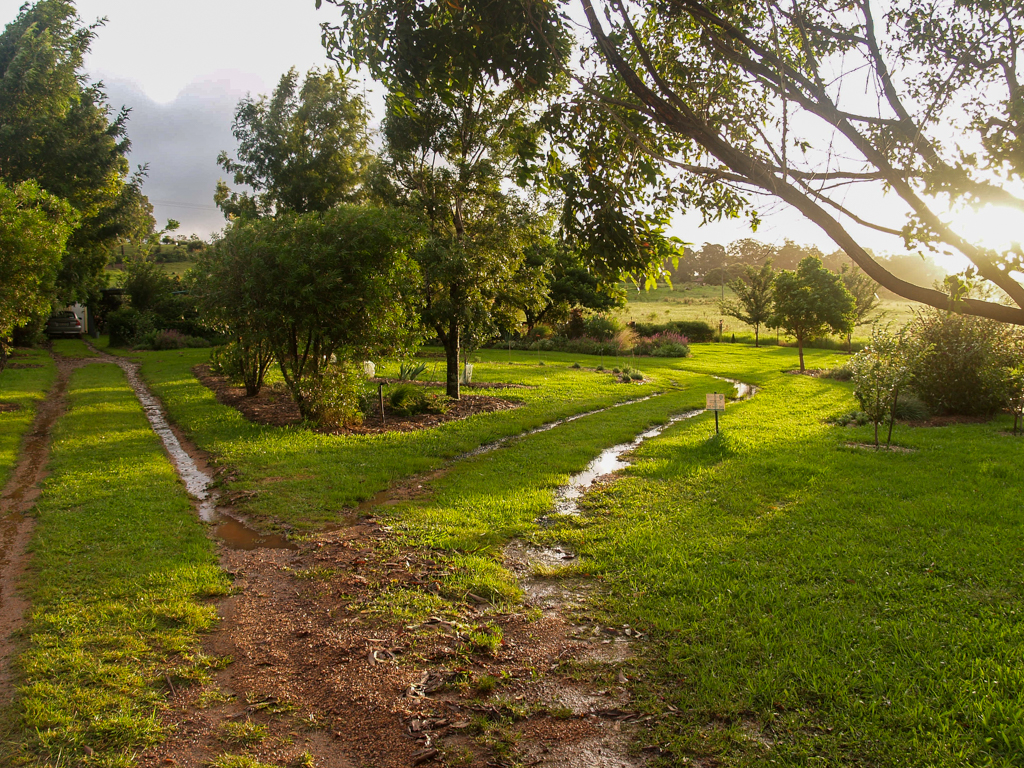Restoring sodden soil
2016-09-16T01:55:56+10:00
With summer rains on the way, it's time to explores some gentle techniques to help restore your wet, wet, wet soil.
“Of droughts and flooding rains.” Is there a more accurate description of Australian weather than that found in Dorothea Mackellar’s 1908 paean to the Australian landscape, My Country?
The last few months have been epic, weather wise. My place ended autumn in serious drought, but it has since rained. Not enough to cause a flood, but certainly enough to set my garden up for its best spring in six years.
Elsewhere in the country, drought has switched to flood in dramatic fashion. Western Queensland and outback NSW are getting bumper rainfall, South Australia has been soaked, and it’s so wet in Victoria that twin waterfalls have sprung up on the cliffs overlooking the Twelve Apostles on the Great Ocean Road.
Saturated soil appreciates a bit of TLC. In the short term, wet soil isn’t an issue, but if it stays sodden or is inundated for longer than a couple of days, the excess moisture can wreak havoc, reducing in the soil and causing conditions to become anaerobic and sour. Pathogen fungi thrive in these conditions, and in many cases the lack of air in the soil causes plant roots to simply rot. Some plants are adapted to medium-term saturation (especially things such as marginal wetland plants and trees including paperbarks and river red gums), others need perfect drainage and will turn up their toes in swampy conditions.
The soil microbiome suffers a similar fate. Some microbes thrive in anaerobic conditions, but the good guys, the beneficials, prefer an aerobic environment with plenty of oxygen. In the absence of oxygen they die.
To remediate sodden garden soil after prolonged rain, focus on getting the oxygen into it. Scrape back any mulch to let the surface breathe and once things dry out a bit, aerate the soil by driving in a garden fork. When the soil is dry enough to dig, consider mixing in some coarse compost, or even woodchips to open it up again. Normally, I’d never recommend using woodchips in this way, but post-flood recovery is an exception.
Finally, if you garden on free-draining soil that has been saturated by prolonged rain, it’s potentially been leached of nutrients. This depends on the chemistry of your soil (some elements bind to others via electrical charges, preventing them from being leached), but as a general rule, free-draining soils leach easily and can take time to recover.
In hard-working garden areas such as the vegie patch or citrus orchard, get some fast-acting nutrients into the soil. Liquid fish emulsion provides a short-term boost. Supplement these with slow-acting fertiliser such as pelletised chook manure, and over the long term, focus on building your soil’s capacity to hold nutrients. Organic matter will help do this, so it’s worth adding compost, growing successive green manure crops and keeping bare soil covered with mulch or a cover crop.
Rain is almost always a good thing, but I assure you, too much of the wet stuff can be a blessing, and a curse, rolled into one muddy puddle. Your garden will recover, but it might take time.






